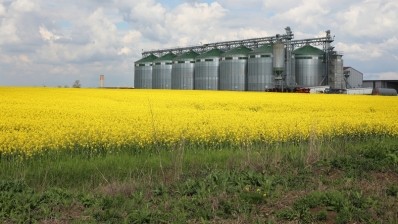Researchers claim shelf-life boost for feed when using organic acid blend alternative to formaldehyde

Formaldehyde is an end-of-pipe, effective solution, it said. A popular biocide used for feed hygienisation, formaldehyde has been denied re-authorization in the EU for safety reasons.
The use of formaldehyde as a feed additive is multifaceted – it acts both as an agent to extend shelf-life for feed for export and it also deals swiftly with the microbial load in raw feed materials. Trying to find one alternative that works as well is challenging, said Prince Nanda, global product manager, Trouw Nutrition.
He told us the company has, in effect, split the challenge of formaldehyde replacement into two parts.
On tackling formaldehyde substitution in relation to shelf life of feed, the company is using a specific blend of free and buffered organic acids and surfactants, branded as Fylax Forte-HC liquid.
The company conducted trials comparing formaldehyde against its product, and found stark differences, with the results very much favoring its organic acid blend.
"We are conducting further research in finding a potent and cost effective solution that can replace formaldehyde with respect to enterobacteriaceae control. First results that are coming back from feed producers and oilseed crushers look promising," said Nanda.
Shelf life study details
The company was surprised at the scale of the success it saw for its Fylax Forte product in the two shelf life extension trials it ran comparing it to formaldehyde, he said.
The trial relied on a ‘stressed shelf life’ approach, a method to accelerate mold growth for lab scale evaluation, explained the product manager.
Results of Trouw Nutrition trials evaluating the effects on shelf life of a specific blend of free and buffered organic acids and surfactants compared to formaldehyde
| Stressed shelf life* (days) | ||
Control Group | Formaldehyde | Fylax Forte-HC liquid | |
Trial One | 6 | 11 | 54 |
Trial Two | 24 | 30 | 78 |
*Stressed Shelf life: Trouw Nutrition said this is a method to accelerate the determination of the shelf life of the feed. Actual shelf life is 3 to 6 times of the stressed shelf life, depending on the temperature and relative humidity of the region.
The activated propionates in its product act as mold cell-wall penetrating agents and buffered organic acids ensure prolonged availability in the feed, preventing recontamination during storage and handling, explained Nanda, when asked what the likely mode of action of Fylax Forte is in this respect.
The product is applied at the mixing stage, he added.
Trouw Nutrition claims the volatile nature of formaldehyde delivers little residual effect, and in that way, it is limited in terms of preventing recontamination of molds in raw ingredients or compound feed.
‘The blend and the percentages of organic acids are critical’
The organic acids category is very broad though, cautioned Nanda.
The effectiveness of organic acids in relation to the prolongation of shelf life of feed raw materials depends on which ones are selected, to what extent they are buffered and the technology use in producing them, he said.
“There are a few organic acids that, if they are used in pure form, do evaporate, and they also don’t have a residual effect.
“But if we choose the right organic acids, if we use technology to protect them, to buffer them, then they can stay for a very long time within the raw materials or feed,” he said.
It is the blend and the percentages of organic acids that are critical, along with other components such as the surfactants in the formulation, stressed Nanda.
“We make the product as broad spectrum as we can, and that is where our expertise really comes into play.”
Dosage level recommendations differ depending on the raw materials used, the moisture content, the storage environment of the feed, he said. “We have always seen that the liquid versions of organic acids are much more effective,” said Nanda.








